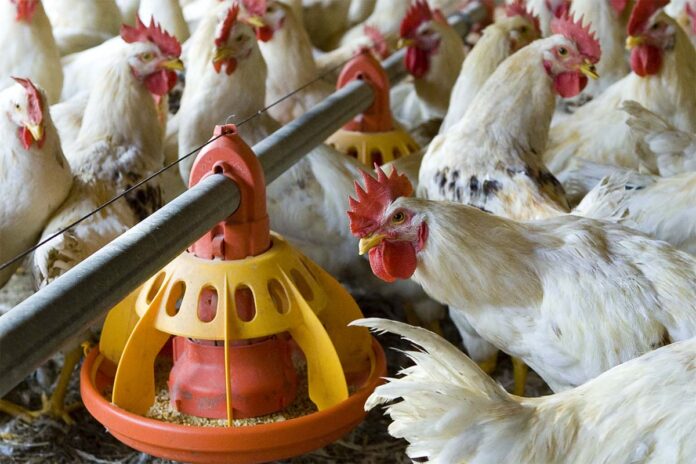
The dietary fibre content of broilers diets is frequently neglected during feed formulation, despite the prevalence of fibrous material in feed ingredients and notable impacts of fibre on the gastrointestinal tract environment.
The extent of the influence of dietary fibre is dictated by the specific fibre fraction, i.e. primarily its solubility in gastrointestinal environmental conditions, as well as by the age and health status of broilers. Measuring soluble and insoluble non-starch polysaccharides (NSP) enables for more accurate predictions about the response of broilers to fibre content compared to conventional crude fibre values. However, there is currently a lack of understanding about NSP values for formulation because inaccurate crude fibre values are still referred to in the formulation of broilers diets. Of particular interest is the impact of soluble NSP (sNSP) due to its impact on digesta viscosity and the microbiota. In this study, broilers were fed either wheat or corn-based diets formulated to contain the same crude fibre and protein content but differing sNSP levels.
Four hundred and eighty day-old Ross 308 broilers were randomly allocated into 48 pens in a 2 × 3 factorial arrangement of treatments, each with eight replicates of ten broilers. The factors were grain type (corn or wheat) and dietary sNSP level; the sNSP levels for the corn and wheat diets respectively were classified as high (8.5 or 11.5 g/kg), low (5.8 or 9.0 g/kg) or medium (6.3 or 9.7 g/kg) according to the estimated values for corn or wheat-based diet, respectively. Formulated diets contained approximately 2.4 g/kg and 2.5 g/kg crude fibre for corn or wheat-based diets, respectively. On day 14, four broilers per pen were randomly selected for measuring the impact of sNSP and cereal grain type on the gizzard, ileum and caeca pH, ileal digesta viscosity and short chain fatty acid (SCFA) concentration in the caeca.
There was a numerical increase in ileal viscosity as sNSP level increased (4.46, 4.04 and 3.95 cP for high, medium and low, respectively, P = 0.101). In addition, broilers fed the wheat-based diets presented lower ileal pH and 130% increase in ileal viscosity compared to those fed corn-based diets (P<0.05). Furthermore, increasing dietary sNSP level led to the significant reduction in caecal pH (6.04 vs 6.51, P<0.05), suggesting alterations to intestinal microbial fermentation activities. This was evident in groups fed the wheat-based diets, where total SCFA and acetic acid concentration in the caeca were higher in broilers fed the diets with low sNSP compared to those fed high sNSP (P<0.05). Interestingly, the concentrations of caecal propionic, isobutyric and valeric acid were consistently greater in the broilers fed diets with low sNSP compared to those fed high sNSP (P values <0.05), with levels in birds fed the medium sNSP diets being not different compared from either group.
Additionally, broilers fed the corn-based diets exhibited higher valeric and lower succinic caecal concentrations compared to those fed the wheat-based diets (P values <0.05). This could indicate a significant cereal grain type- and sNSP level-dependent substrate availability for specific microbial fermentation. In conclusion, the findings from this study reiterate that measurements of crude fibre cannot be used to accurately predict utilization of dietary fibre by the birds. It also proves that the sNSP fraction directly impacts the gut environment in young broilers, in terms of intestinal pH, ileal viscosity and fermentation activities of commensal bacteria.
From the Aust. Poult. Science Symp. 2020

















